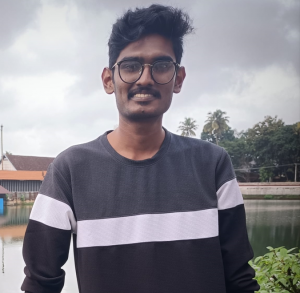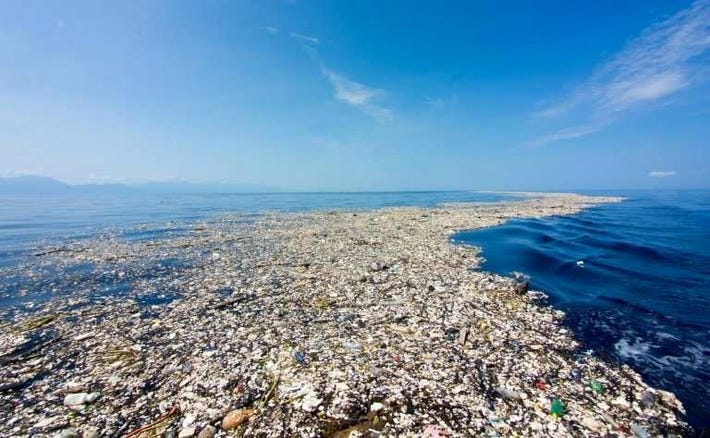News Highlight
In the Great Pacific Garbage Patch, coastal life piggybacks on plastic trash.
Key Takeaway
- “The Anthropocene epoch” is the moniker some scientists gave to a new time in Earth’s history.
- It is distinguished by the impact of one species on the geology, ecosystems, and,, ultimately, the planet’s fate: Homo sapiens.
- They’re still trying to figure out when this epoch began; some theories include the first nuclear weapon test and fast industrialisation following WWII.
- Another challenge is the production of plastic rubbish, plentiful in our urban waste, rivers, and forests, from the highest peaks to the depths of abyssal trenches.
- Ocean life has washed up on beaches with plastic trash in its guts.
- Plastic has offered ample evidence of its natural endurance, but scientists have recently discovered evidence.
- It is becoming one with nature in worrisome new ways.
Great Pacific Garbage Patch (GPGP)
- About
- It is twice the size of Texas and spreads for hundreds of kilometres across the North Pacific Ocean.
- It is one of the terrifying examples of human activity destroying the earth.
- Marine debris and pollution, primarily plastic rubbish, accumulate in the world’s oceans.
- The region is distinguished by extraordinarily high relative pelagic concentrations of plastic, chemical muck, and other garbage trapped by the North Pacific Gyre currents.
- Microplastics account for 94% of the patch’s estimated 1.8 trillion pieces of plastic.
- However, this accounts for only 8% of overall tonnage.
- As it turns out, the patch contains 79,000 metric tonnes of plastic.
- The majority of it is abandoned fishing gear, not the plastic bottles or packaging making headlines today.
- Location
- The Great Pacific Garbage Patch is between Hawaii and California in the Pacific Ocean.
- The shape and location of the Great Pacific Garbage Patch, however, are constant shifts due to fluctuating ocean currents and winds.
- This massive patch is observed to migrate around 35°N to 42°N and 135°W to 155°W on average.
- Furthermore, seasonal fluctuations in winds and currents cause the patch to shift from west to east and north to south.
- The Great Pacific Garbage Patch is separated into two sections: the Eastern Garbage Patch, which stretches from California to Hawaii, and the Western Garbage Patch, which stretches from Hawaii to Japan.
- The Great Pacific Garbage Patch, a ‘plastic island,’ is widely misunderstood as a whole island.
- However, it is simply a floating patch of rubbish on the ocean’s surface that appears to be an island due to the proximity of the contaminants.
- Furthermore, the patch is said to be approximately 1.6 million square kilometres in size, which is three times the size of France!
The causal factors of GPGP
- GPGP are solely the result of human activity.
- Merchant ships discharge cargo, sewage, used medical equipment, and other plastic-containing garbage into the ocean.
- Discarded fishing gear is the most significant ocean plastic pollution source.
- Plastic trash from the continental United States, such as;
- Food wrappers and containers, bottles and container caps, plastic bags, straws and stirrers, and so on, enters the ocean mostly through storm-water runoff.
- Microplastics (particles less than 5 mm in diameter), such as those found in scrubbers and cosmetics
- Unlike POPs (Persistent Organic Pollutants) or chlorofluorocarbons (CFCs), plastic pollution has received little attention in international accords.
Impact on marine and human life
- Affects the movement of marine organisms
- Ghost nets, a word coined to characterise intentionally discarded or accidentally lost netting, entangle whales, seals, and turtles in the ocean.
- Every year, an estimated 100,000 marine animals are strangled, smothered, or harmed by plastics.
- Direct harm to species
- Nearly all of Midway’s 1.5 million Laysan albatrosses have plastic in their digestive systems.
- Approximately one-third of their chicks die, many caused by their parents feeding them plastic.
- Plastic may also be mistaken for food by fish and whales.
- Indirect harm to species via the food chain
- Aside from endangering wildlife, floating debris can absorb organic contaminants such as;
- PCBs, DDT, and PAHs from seawater at the microscopic level.
- These toxin-containing plastic particles are also consumed by jellyfish, which consume fish.
- Many of these fish are then consumed by people, exposing them to hazardous toxins.
- Spreading invasive species
- Invasive species that attach to floating plastic in one place and drift vast distances to colonise neighbouring ecosystems are also aided by marine plastics.
- According to research, plastic marine trash impacts at least 267 species globally.
- Affects Food-chain
- Algae do not grow properly because rubbish inhibits sunlight.
- The absence of algae hurts the entire food chain.
- Furthermore, plastics in the ocean are leeching toxic chemicals into the water, which are most likely entering the food chain.

Conclusion
- Because the Great Pacific Garbage Patch is further away from all of the polluted beaches.
- No country is willing to take on the task of cleaning it up.
- In an attempt to explain surrounding nations’ lack of responsibility.
- However, numerous worldwide institutions and individuals are working to keep it from spreading further.
- The problem with retrieving these plastics with nets is many little sea animals.
- They are the same size as some plastic detritus and would be caught.
- Even if we could develop webs that could exclusively remove plastic garbage, it would take a long time, which we do not appear to have.
- A vast number of ocean cleanups are being undertaken all over the world to help minimise plastic waste.
Pic Courtesy: Forbes
Content Source: The Hindu



